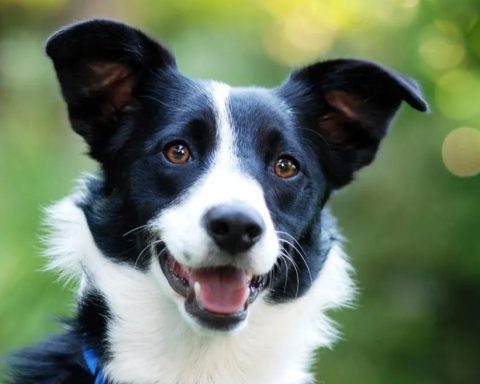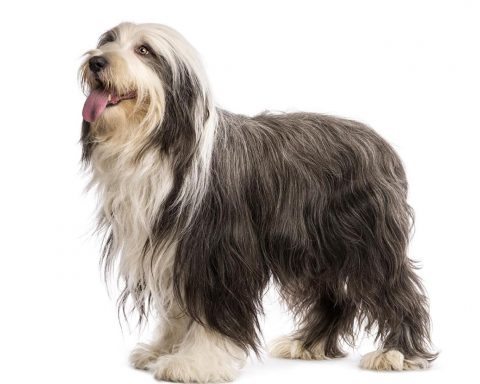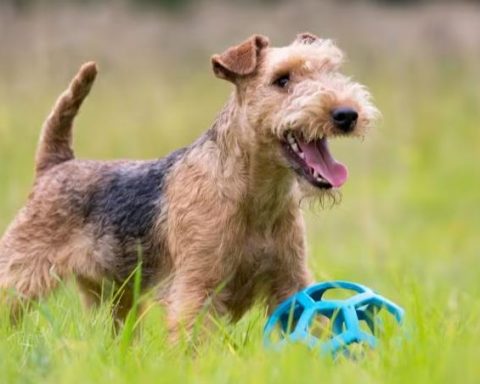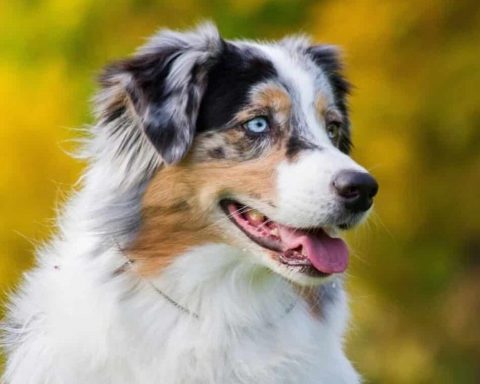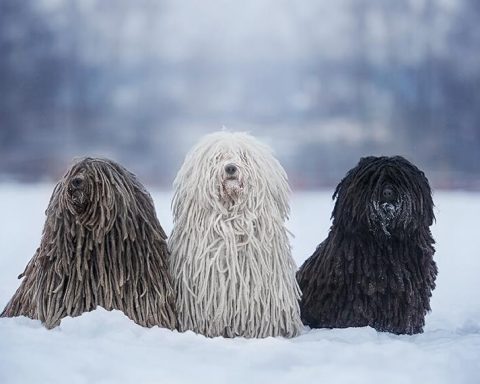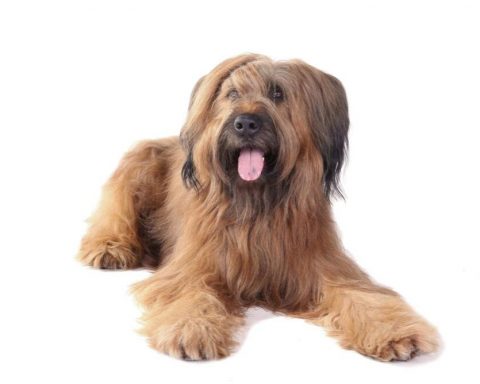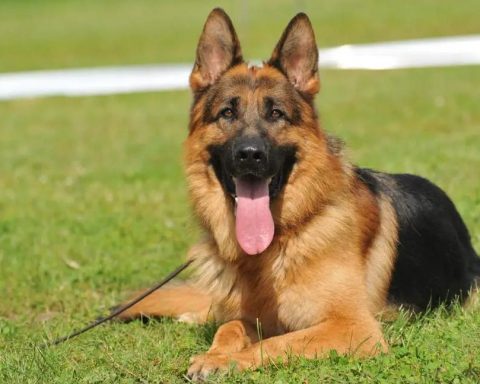The person is short, moderately boned, and deeply chested. The proportion of the whole body in side profile is that the length is much greater than the height. The tail is very low and foxtail-like.
The overall impression is that of a beautiful, powerful small dog with very good speed and stamina, intelligent, solidly constructed, but not rough.
Place of origin
England
Body type
Overall balance is more important than absolute size. When standing naturally, both males and females are approximately 10.5 to 12.5 inches tall at the withers. The ideal ratio of height (the vertical distance from the horse’s shoulder rump to the ground) to body length (the horizontal distance from the sternum to the position of the sciatic protuberance behind the rump) is about 1/1.8.
Ideal weight for males is about 30 to 38 pounds; ideal weight for females is about 25 to 34 pounds. Overall disproportions that are too large or too small are considered serious defects.
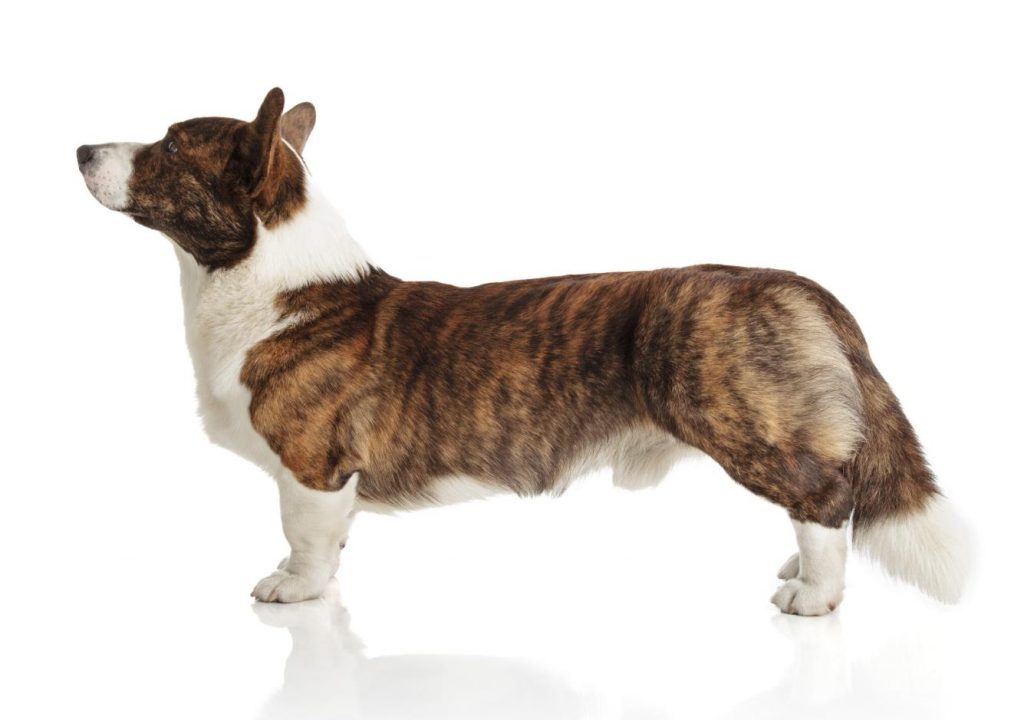
Head
The head is delicate and harmonizes with the sex and physique. It should never be too large and bulky, nor too small and slender to harmonize with the rest of the body. The expression is alert, refined, watchful, and friendly.
The eyes are slightly larger than medium size, not protruding, with dark black circles and clear corners. They are relatively well separated. The eyes are dark and match the coat color. Orchid eyes (including eyes that are partially orchid in position), or one eye orchid and the other dark black, are permitted in Orchid Brindle dogs, and are considered out of character in dogs of other colors.
The ears appear large and conspicuous compared to the overall size. The tips of the ears are slightly rounded, while the auricles are very robust. The ears are moderately wide at the base, standing and turned slightly forward when alert. When the ears are erect, the tips are slightly wider in distance, and a straight line drawn from the tip of the nose to the center of the eye extends just to the tip of the ear. Small or pointed ears are serious defects. Droopy ears are a disqualification.
HEAD: The top of the head between the ears is moderately broad and flat, with no marked prominence of the posterior occipital bone, tapering toward the eyes. Slightly lowered between the eyes. The cheeks are flat and sculptured below the eyes, where they unite with the front of the face. The cheekbones are not prominent.
Length of muzzle (distance from nares to stop) slightly shorter than length of head (distance from stop to highest point of posterior occipital bone), muzzle to head length ratio about 3/4; muzzle rounded but not blunt; tapered but not pointed. The outline of the muzzle is parallel to, but slightly lower than, that of the head, mainly due to the presence of a clear, moderate stop.
The nose-glasses are black, with the exception of dogs of the orchid brindle color, which are preferably black-nosed, but butterfly-nosed are also acceptable. Dogs of other colors are out of order if the nose-glasses are not black. Lips close and simple.
Jaws strong and neat. The jaws are of moderate depth, extending to the noseglasses, and are rounded. Teeth are strong and neat. Shear bite and is preferred. A protruding upper jaw bite and harmony, a protruding lower jaw bite and crooked teeth are considered serious defects.
Neck, Dorsal Line, Body
The neck is of moderate length, well muscled and free of flab. In males, in particular, the neck is very well developed but in proportion to the whole.
The neck is extended forward and well integrated with the shoulders.
The dorsal line is horizontal. Body long and firm.
Chest of moderate width with prominent sternum.
The chest is deep and the ribs are well supported, providing enough room for the lungs.
Ribs extend backward.
Waist short, firm and moderately lifted.
The loin socket is well defined.
Hips slightly down towards the tail.
Tail: Positioned low in relation to the body and extending to the fly joint. When standing and when strolling, the tail hangs straight down; when he runs suddenly, it is raised parallel to the ground; when excited, it is raised upwards, but never curled behind the back. The high position of the tail is a serious defect.

Forequarters
The chest is of moderate width, tapering downward and relaxing between the forelegs. The scapulae are sufficiently angled downward and outward from the malleolus to give the ribs ample room for expansion. The scapula is long and tilted backward, uniting with the upper arm and making an angle of close to 90 degrees with it. The upper arm bone is approximately equal in length to the scapula. The elbow fits the torso and is neither lax nor constricted. The forearms (ulna and anterior carpal bones) bend in line with the expansion of the ribs. This bending keeps the distance between the wrists (carpals) closer than the distance between the elbows. The quill bones are strong and pliable. Wolf claws excised. Foot claws are quite large and rounded with thick pads.
Toes slightly outward, viewed widthwise, in a position opposite the shoulder, and kept capable of straightening forward when walking. When viewed from above, the angle between the outward deflection and the centerline must not exceed 30 degrees. The toes must not be spread. In a correct Cardigan, the forelimbs are neither straight nor excessively curved to appear unhealthy. Taken as a whole, the relative bone mass of a dog of this size appears to be ample, but not so exaggerated as to appear stubby, or insufficiently agile. Pointing straight ahead and pointing incorrectly is a serious defect.
Hindquarters
Well-muscled and firm, but slightly less wide than the shoulders. The hip bones (pelvis) slope slightly downward from the hips and form a right angle with the thigh bones at the hip sockets. The stifle and fly joints are moderately angled. The fly joint is low. Metatarsals perpendicular to the ground and parallel to each other. Wolf paw excised. Foot claws point straight ahead and are slightly smaller and more nearly ovate than the forelimb foot claws. Toes rounded. Foot pads are thick. Overall, the hindquarters must be strong enough to propel this short, but relatively heavy herding dog efficiently across a variety of terrain.
Coat
A medium length, very dense double coat. The outer cloak of hair is slightly coarse and stiff in texture, never bristly, curly, or silky. The coat lies smoothly and is resistant to harsh weather. The insulating undercoat is short, soft and thick. The correct coat is: short on the head, ears, and legs; medium length on the body; and slightly longer on the collar, back of the thighs (forming the “shorts”), and under the tail.
The coat should not be so exaggerated as to look like a hairball. This breed sheds seasonally, so if the undercoat is lacking for seasonal reasons, but the coat is healthy, it is not a defect. Trimming of the coat is not permitted except for trimming of the foot and paw coat, but whiskers may be trimmed if desired.
A coat that is soft, the same length, bristly, curly, wiry, too short, or too flat is a defect, and a coat that is too long, or looks like a hairball is a very serious defect.
Color
Various shades of red, dark brown or mottled. Black with or without brown or spots. Orchid rutile (black, gray, marble) with or without brown or flecks. There is no preference for these colors.
White coloration is usually found on the neck (partially or forming a collar), legs, chest, muzzle, lower part of the body, tip of the tail, and white ribbing on the head. White on the head must not dominate and must not surround the eyes.
Colors other than those described above or white predominating on the body are out of character.
Gait
Stretchy and smooth. Effortless. When viewed from the side, the trot is performed with the forelegs fully extended forward, the legs not being lifted excessively high, in coordination with the drive provided by the hindquarters.
When viewed from the front, the legs are not exactly parallel to each other, but are bent slightly inward to offset the inconvenience caused by the short legs and wide chest.
At the trot, the hind limbs extend below the body and move in the same straight line as the forelimbs, with the flying knuckles neither curved inward nor turned outward, and the ensuing backstroke action will produce a powerful propulsive force (the foot paws will be over the position of the tail).
The paws move parallel to the line of travel, never swinging, crossing, or touching each other. Sudden undulating movements, swaying gaits, lifting the leg too high, and coming or going too close or too wide are all considered faulty gaits. As a herding dog, he must have agility, stretching movements, and sufficient endurance to do his work.
Temperament
Calm, loyal, friendly and adaptable. Never shy or mean.
Disqualified
Dogs of any color other than orchid brindle appear to have orchid eyes or partly orchid eyes.
Droopy Ears.
Dogs of any color other than orchid brindle appearing to have non-pure black nose lenses.
Any color other than those allowed. White predominates on the body.

